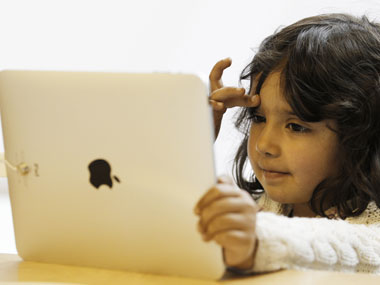A learner’s resolution. Guide to surviving the new world of advertising.
I was fortunate to meet with the great Sanjay Khare a few days ago. For those who don’t know Sanjay, he is an advertising veteran having spent over three decades in the business. He is now reinventing himself as a digital marketing specialist at Pinstorm. Sanjay was speaking to a bunch of students at a college do, telling them how he always wears an “L” board every time he goes lecturing.
In a world that’s changing every day I think everyone of us could do with Sanjay’s attitude. Hang a metaphorical board around our necks, step out to embrace change by understanding new ideas and concepts as they emerge and get drawn into the mainstream.
So here folks, for whatever it’s worth, my game-plan to learn and stay relevant as things change around me. Over the years I have put down a process, a ritual as I call it, and if I have not already bored you to death at a party with my theories, maybe worth spending the next few minutes on.
When I started out in this business, the world was still analog. We relied on expensive award show annuals from One Show, British D&AD, Art Director’s Club or magazines like Communication Arts, Archive, Print and rare issues of Creative Review and Admap to feed our need for knowledge. Today the world of learning comes to us at broadband speeds, and free (mostly). With sites like Ads of the World, The FWA, The Inspiration Room, The Dieline and not to miss out on a very important plug, this very website Campaign India.
Now I have never been a person who only looked at other advertising for inspiration and knowledge. So part of the learning process involves devouring magazines like Wired. I started out with second hand copies bought off the pavements of Brigade Road, Bangalore. Pop Sci. Reading authors like Tom Peters (don’t forget to check out his brilliant collection of PPT slides under the resources link), Ries & Trout, hell I even read their lame duck tome, Horsesense. Edward De Bono. Sun Tzu, Martin Lindstorm…
By the late 90s, the web became my feeding ground. Using bookmarks and later a MyYahoo page, I dived deep into the endless pool that the information revolution had created. For a guy interested in new things, there was no end to know much he could read and understand. Soon blogs were upon us and some of the best minds whose books I waited for, for months and years, started to write their own blogs. Seth Godin, soon Tom Peters and Sally Hogshead.
Then in around 2003 I discovered RSS. Or Real Simple Syndication. For a learner, discovering feed readers was moment of nirvana. From a forager of information, feed readers like Bloglines brought stuff I liked onto my desktop. Instead of me looking for stuff on various sites, knowledge was waiting for me everytime I opened my browser. At the peak of my feed addiction, I was reading up to 700 blogs and RSS enabled websites a day (now it’s a more manageable 56). From ones that posted a few times a month to others like BoingBoing and Metafilter that posted many, many times a day. Glancing through some 2000 bits of new information a day, reading some 50 pieces or so that interested me and absorbing, sharing and using a dozen or so a day.
On a personal level I have had to make a few adjustments too. First and most important to set aside some time every day for learning. It’s easy to make excuses. We are busy, working hard, travelling, making presentations, pitching. Yawn.
For me, the fear of irrelevance, even worse obsolesce motivates me to get off the bed early every morning. And I do this every morning, every day, no matter how late I have slept, whether I am in town or on holiday. If I can have net access, I will clean up my feeds by the time I head out of home.
These days, Twitter has become a rich source of new stuff. G+ from being seen as a Facebook killer has become more like my Bloglines killer, where people I know and respect post interesting links and videos. I pick up an odd bit or two from Facebook through the day. As information and content sources grow online, I feel I am using other people as filters to filter what reaches me.
So what do I take forward into 2012 as a learner’s resolution? To glance less and read more. To read more books. The brilliant Brain Picker Maria Popova reads as many books a week as I have read all year. To seek out and find new semantic reading tools like Zite to help me discover more of what I will like and what I would skip. As Lord Alfred Tennyson captured in this pithy little line in Ulysses: “to strive, to seek, to find and not to yield.”
Thanks for reading everyone. If you are sober in the weekend, do go out and make an L board for yourself. And have a great 2012.![]()

